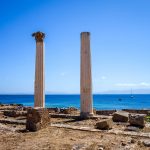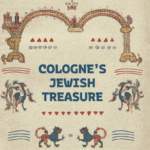Although ultra-Orthodox Israelis don’t stand as the siren blares on Holocaust Memorial Day, the memory of European Jewry’s destruction continues to shape their community
Looking on from the sidelines, one might think Israel’s ultra-Orthodox ignore the Holocaust. Most of them don’t stand silently at attention when the siren is sounded on Holocaust Remembrance Day; most haven’t participated in high school trips to Poland; and with limited access to screens, they don’t see documentaries and movies about the Shoah.
In the first decades of the State of Israel, the ethos of Holocaust commemoration was one of transition from cataclysm to national revival, from the destruction of Diaspora Jewry to the rise of the new Jew. The ultra-Orthodox (known in Hebrew as Haredim, as in “those who tremble (haredim) at His word” [Isaiah 66:5]) rejected this redemption offered by Zionism. Some of their rabbis had allegedly instructed their communities to stay put rather than flee European danger zones for the land of Israel; others have been charged with issuing these orders even as they themselves fled. Conversely, Israeli society at large felt alienated by the Haredim, associating them with the doomed Jews of Europe, and the horrors of the Holocaust made it difficult to identify with their belief in an omnipotent, benevolent God.
Yet Holocaust remembrance preoccupies the ultra-Orthodox no less than it does mainstream Israelis. The ethos, however, is different. While many Holocaust survivors sought to put the Diaspora behind them and rebuild their lives in the Land of Israel, their Haredi counterparts sought to reconstruct the Diaspora experience, regarding it as the embodiment of traditional Judaism. To quote a 1958 editorial in the newspaper of Poalei Agudat Yisrael, an ultra-Orthodox party:
We can’t bring the dead back to life, for only God can do that, but we can continue their way of life unchanged. Memories, monuments, and memorials are borders and barriers between the living and the dead, between past and future, and we don’t believe in borders and barriers. For us, the past has not yet passed, and the future isn’t divorced from that which preceded it. […] There was indeed a Holocaust that deprived us of millions of our people […], but we can bind their souls up in the living spirit of this generation, enabling our martyrs to live on within us by maintaining the sanctity of their lives and cultivating their values and hopes. (Yehuda Nahshoni, “Holocaust Remembrance Day,” She’arim, 10 Tevet 5618/ January 2, 1958, p. 2)
The author opposed what might be termed the Holocaust monument culture. In his view, Haredi society was the authentic continuation of the world that had been destroyed, and the very existence of this flourishing community was the most appropriate, meaningful perpetuation of the memory of those murdered. For Nahshoni, the ultra-Orthodox should serve as a kind of living museum of European Jewish life – at least as depicted in the Haredi imagination.

Empty Chairs
Wind blew, light drew them all.
New songs revive their mornings.Only I, small bird, am forsaken
under the Shekhina’s wing.(Hayyim Nahman Bialik, “Alone,” in C. N. Bialik: Selected Poems, trans. Ruth Nevo [Tel Aviv: Dvir, 1981])
In his 1902 poem “Alone,” Hayyim Nahman Bialik lamented the emptying out of the study hall. Drawn to secularism and modernization, his friends had left him alone under the wings of the divine presence. The drastic changes undergone by eastern European Jewry at the dawn of the 20th century prompted many – especially the youth – to move to big cities or emigrate to America, leaving Judaism behind. Amid pogroms and penury, the benches of the traditional beit midrash were deserted.







